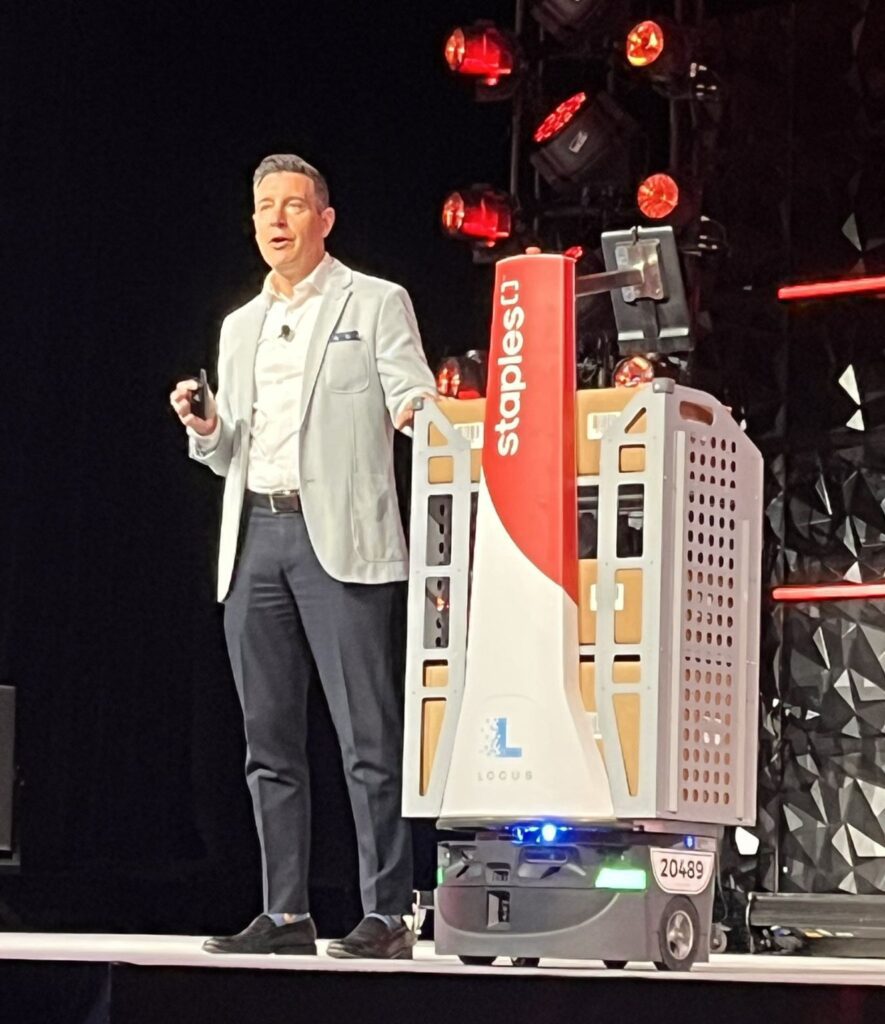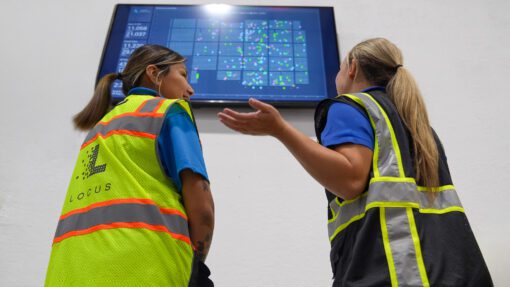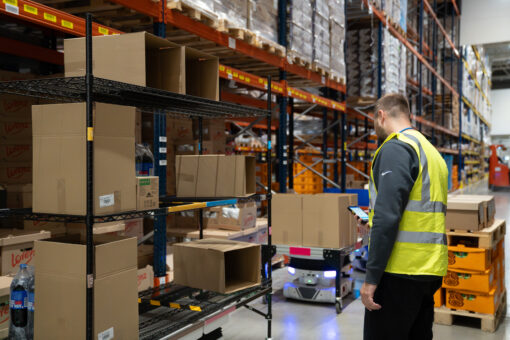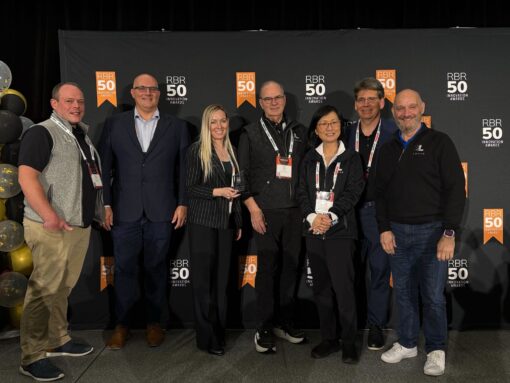WP: How to achieve 400 UPH with Locus Fast Pick
WP: How to achieve 400 UPH with Locus Fast Pick Download Now!
How to Start Your Warehouse Automation Journey: A Playbook from Staples Canada
Mary Hart, Sr. Content Marketing Manager

Starting the automation journey is one of the most strategic, but often most daunting, moves a warehouse operation can make. With so many technologies, platforms, and partners to choose from, it’s easy to fall into decision paralysis or pursue the flashiest solution instead of the right one.
That’s why the story of Staples Canada stands out. In a recent episode of “Warehouse Automation Matters”, Mert Selcuk, Senior Manager of Supply Chain Strategy & Capabilities, shared how his team approached automation with clarity, rigor, and a focus on people, not just platforms. Their approach offers a practical roadmap for warehouse leaders looking to take the first step.
Here’s a step-by-step breakdown of their playbook, with key takeaways you can apply to your own automation strategy.
Step 1: Upgrade Foundational Systems First
Before a single robot arrived, Staples Canada took a hard look at their operational foundation. Their first move was transitioning from manual processes to a modern WMS.
“We went from pen and paper to a very robust WMS,” said Selcuk. “That allowed us to ask, ‘What’s next?’”
The upgrade to a robust WMS digitized their workflows and enabled the data visibility and process control needed to support automation. Without a strong WMS, even the most advanced automation systems can create more complexity than they solve.
Your move:
Audit your current systems. If you’re still relying on spreadsheets or outdated software, prioritize a WMS that can scale with your operation. Make sure it can integrate with the automation tools you're considering.
Step 2: Identify Your Warehouse Automation Goals and Not Just Your Tech
The biggest misstep many warehouses make is starting with a tool instead of a need.
When Staples made the move, they asked “What are our priorities?” said Selcuk. For his team, automation needed to:
- Provide unmatched flexibility and scalability
- Improve the day-to-day experience for associates
- Extend customer order cutoff times
- Deliver ROI without the burden of bolted infrastructure
With that criteria, autonomous robots quickly rose to the top of the list.
Your move:
Before looking at vendors, define what success looks like, both operationally and financially. Align internally on key outcomes: Is it faster picking? Labor reduction? Improved SLAs? Then evaluate technology through that lens.
Step 3: Evaluate Partners, Not Just Vendors
One of the most telling parts of Staples’ approach was that the partnership began long before the contract was signed.
“Locus had already visited five of our sites before we even signed a PO,” said Selcuk. “We never wanted to feel like customer number 768. We wanted to be known as Staples Canada.”
That early investment of time and on-site engagement showed Staples that Locus understood their operations and was committed to building with them, not just selling to them.
Your move:
Look for partners who ask for your raw data, visit your facilities, and bring operational expertise to the table before the deal is done. Avoid any solution that relies on generic ROI templates or one-size-fits-all promises.
Step 4: Build Cross-Functional Buy-In Early
One of Staples Canada’s smartest decisions was bringing the right people to the table from the start.
“Everyone, including engineering, IT, ops, project management, and Locus, was on the same calls,” Selcuk said. “We didn’t want a single point of failure.”
Instead of siloing responsibilities, Staples built shared understanding across teams. IT learned the capabilities of the Locus system. Engineering understood the impact on workflows. That integration paid off during implementation and beyond.
Your move:
Create a core project team that spans departments. Hold joint planning sessions. Share documentation and dashboards. Make sure every stakeholder understands how automation will affect their role and has a voice in shaping it.
Step 5: Validate with Real-World Metrics
How do you know if automation is working? For Staples, it came down to throughput.
“We kept a very close eye on lines per hour and units per hour from day one,” Selcuk said. “Those became our north star.”
Using LocusHub, the team was able to track performance in real time. Not only did they hit their targets, they exceeded them.
Your move:
Define your key performance indicators (KPIs) early and ideally before go-live. Track them consistently and compare against both manual benchmarks and initial projections. Don’t wait months to course-correct if something’s off.
Step 6: Prioritize Adoption and Not Just Implementation
Even the most powerful automation fails without associate buy-in, and Staples made sure their team felt ownership from day one.
“We wanted the technology to be collaborative,” said Selcuk. “It’s successful because our associates work side by side with the tech.”
The results spoke for themselves. After one busy Tuesday, an associate assumed it had been a slow day because everything wrapped up so smoothly. In reality, they’d hit their full volume because they’d just picked faster.
Your move:
Invest in change management. Involve associates early in planning and training and make it clear that automation is a tool to support them. Celebrate wins that come from smoother shifts and better work-life balance.
Ready to Start Your Own Warehouse Automation Journey?
If you're exploring automation but not sure where to begin, Staples Canada's experience offers a grounded, practical roadmap: build your foundation, know your goals, and choose the right people to walk the journey with you, inside and outside your organization.
Hear more in our full conversation with Mert Selcuk on Warehouse Automation Matters. Listen now.




